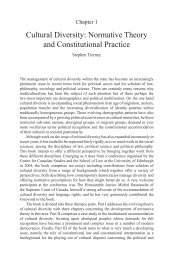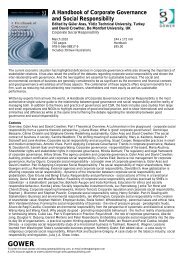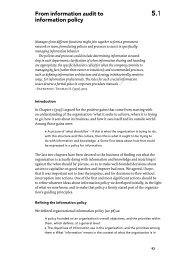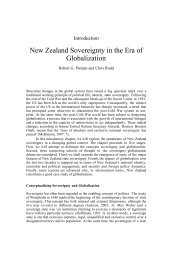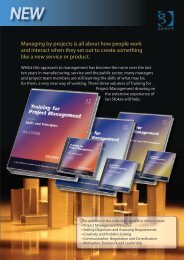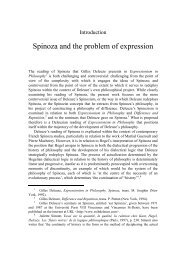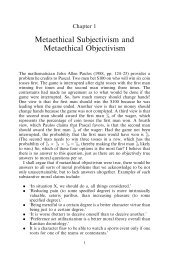The Project Risk Maturity Model
The Project Risk Maturity Model
The Project Risk Maturity Model
Create successful ePaper yourself
Turn your PDF publications into a flip-book with our unique Google optimized e-Paper software.
14 T h e P r o j e c t R i s k M a t u r i t y M o d e l<br />
to be so pessimistic that the modelling must be wrong. All the report’s recommendations<br />
were then quietly forgotten. As it would turn out, actual schedule performance proved to<br />
be much worse.<br />
As the condition of the project grew progressively worse, efforts were made to use the<br />
risk register to identify and manage actions for risk mitigation. Unfortunately these efforts<br />
lacked true support from the project manager. <strong>Risk</strong> reviews were invariably cancelled in<br />
favour of new emergencies. Support for the process was similarly lacking from the other<br />
organisations involved, including the customer and the major subcontractor. <strong>The</strong>re was<br />
general reluctance on the part of the project leaders to tackle risks at source. To do so it<br />
would have been necessary to admit to past mistakes. Survival in project management<br />
jobs required a style that combined energetic fire fighting with the type of cunning that<br />
enables people to forecast success and then avoid blame for failure. <strong>The</strong> development<br />
phase of this project eventually slipped by more than three years: doubling the original<br />
plan.<br />
<strong>The</strong> case of <strong>Project</strong> B illustrates a number of symptoms that may be associated with<br />
Level 1 risk management capability. Forecasts from a cost risk analysis designed to fulfil<br />
a director’s expectations can be worse than useless. If the calculations are unnecessarily<br />
high, the project manager is liable to either spend unnecessarily or claim disproportionate<br />
credit for their performance. More commonly a director’s expectations will be optimistic.<br />
If the risk calculations are optimistically biased in response, the owning organisation will<br />
have late notice of financial issues. In the case of <strong>Project</strong> B, the company’s accountants<br />
were later forced to back trade the project’s contribution to profits. But, perhaps the<br />
most important lesson to be learned from <strong>Project</strong> B is that an effective risk management<br />
process requires continuous and constructive support from managers at all levels. <strong>The</strong><br />
project had the knowledge and resources to manage risk much more effectively, but the<br />
benefits of this were never realised.<br />
Correlation between <strong>Project</strong> Performance and RMM<br />
Assessments<br />
Comparing examples such as <strong>Project</strong> A and B is not untypical of experience to date when<br />
making RMM assessments. <strong>Project</strong>s with higher RMM assessments do seem to be more<br />
capable of achieving their objectives. <strong>The</strong>y also tend to have relatively good reputations<br />
for being good projects to work in. Further evidence for there being a correlation between<br />
project performance and RMM assessments is discussed in Chapter 4: the UK Defence<br />
Procurement case study.<br />
Assessing the Process as it is Applied in Practice<br />
It is one thing to design an effective risk management process. It is another thing to carry<br />
through the process in practice. Even the best-designed process can be rendered ineffective<br />
if it is not implemented as intended. <strong>The</strong> contrast between the example projects A and B<br />
illustrates this point. By working to the process as designed, <strong>Project</strong> A was able to achieve<br />
a higher level of capability than <strong>Project</strong> B. This was despite the fact that <strong>Project</strong> B had the<br />
means to do as well, if not better.



